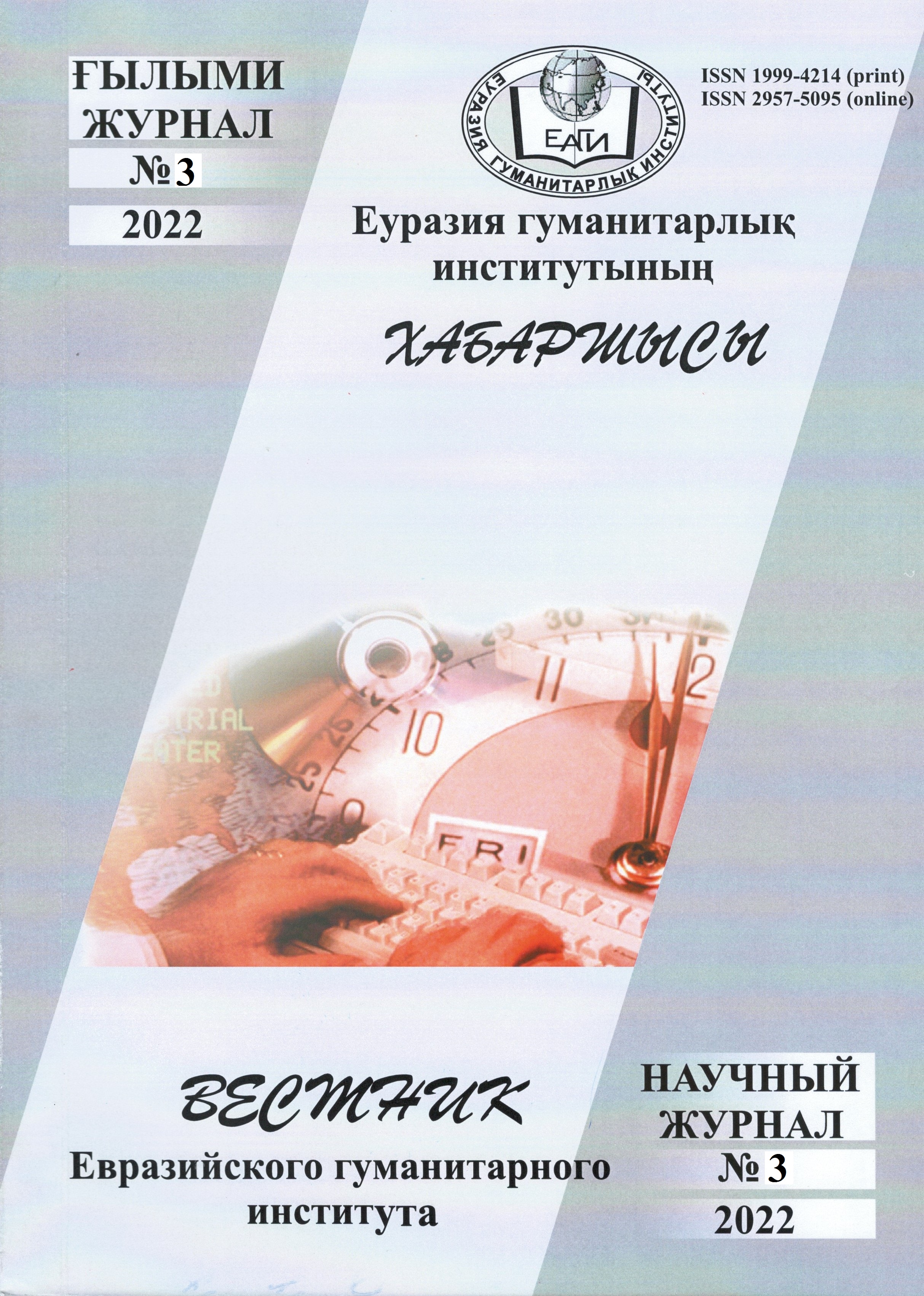ХУДОЖЕСТВЕННОЕ СВОЕОБРАЗИЕ СОВРЕМЕННОЙ КАЗАХСКОЙ ПРОЗЫ
Ключевые слова:
казахская проза, реминисценция, историческая реминисценция, биографическая реминисценция, образАннотация
Радикальные изменения, происходящие в современном казахском обществе, способствовали тому, что духовные искания нашего народа вывели развитие литературной мысли на новый уровень. В постсоветское время, освободившись от политических ограничений социалистического реализма, казахское художественное слово не сразу нашло себе дорогу. Это послужило поводом для появления среди литературоведческой общественности такого мнения, что «казахская литература переживала стагнацию, не могла следовать быстрым темпам развития современности». Однако во всех родах литературы, особенно в эпосе, где жанровое наполнение затянулось, постепенно стали создаваться произведения, раскрывающие новые темы и сюжеты, отвечающие требованиям нового времени.
В статье рассматривается идейно-тематическое и художественное своеобразие современной казахской прозы на основе творчества таких писателей, как Т. Шапай, К. Тюменбай, А. Алтай. Авторы статьи обращают внимание на то, что в прозаических произведениях, написанных за последние двадцать лет, писатели не только использовали накопленные творческие традиции национальной литературы, но и отразили художественные тенденции мировой литературы. Также всесторонне анализируется художественное воплощение национальной идеи в современной казахской прозе с помощью анализа символов «волк – бөрі», «мировое дерево – бәйтерек», «дом – шаңырақ», «Родина – туған жер» и др. При этом допускается, что каждый писатель вкладывает в значение данных художественных символов различные конкретные значения.
Одна из «закрытых» тем, возрожденных в годы независимости, – это художественное воссоздание декабрьских событий, произошедших в Алма-Ате в 1986 г. Впервые в современной казахской прозе на данную тему написал свой рассказ «Қобыздың мұңы» («Печаль кобыза») К. Туменбай, далее эстафету продолжил Аскар Алтай в своей повести «Қаладағы құтпандар» («Городские собаки»). Автор, используя уникальные образы и особенности художественного метода, даёт своё видение периода декабрьского восстания. Повесть писателя А. Алтая «Қаладағы құтпандар» («Городские собаки») авторы статьи рассматривают через литературоведческую призму интертекстуального анализа с определением такого элемента художественной системы, как реминисценция. Исследователи на основе анализа художественного текста выявляют наличие историко-социальных, биографических реминисценций и аргументируют свои выводы на примерах. Авторы статьи устанавливают, что историко-социальные реминисценции, представленные в произведении в виде ссылок на конкретные исторические факты, имевшие место в казахском обществе в конце ХХ века, усиливают художественность произведения и создают историко-социальные предпосылки повествования, а биографические реминисценции являются фундаментальными в произведении и связаны, в первую очередь, с конкретными событиями, имевшими место в жизни автора.
Восприятие новой формы фольклорной мысли, характерной для мистической прозы в современной казахской прозе, будет чрезвычайно интересно каждому читателю. Самая насущная проблема данной научной статьи – анализируемые новые образы и художественные приемы, с целью раскрытия тайн, заложенных как в тексте художественного произведения, так и вне данного текста.


